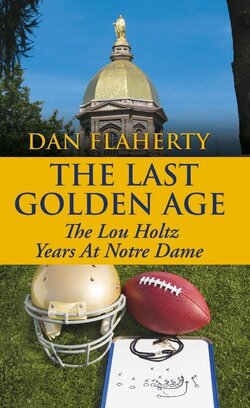1992 Wisconsin Football: Barry Keeps Knocking On The Door
Badger football was in the toilet when Barry Alvarez arrived as head coach in 1990. Wisconsin had won nine games in the preceding four years. Alvarez’s first year wasn’t any better, a 1-10 disaster. But the Badgers had shown progress in 1991, getting to 5-6. The 1992 Wisconsin football team also finished 5-6, but did it with a little more noise and showed they were knocking on the door.
READ ABOUT THE LOU HOLTZ ERA AT NOTRE DAME
The running game has become the staple of Wisconsin football over the years and that pattern was starting to develop in 1992. A four-headed attack was led by Brent Moss, who ran for 739 yards. Terrell Fletcher added nearly 500 yards. Jason Burns and Mark Montgomery also got carries and were quality support pieces. The offensive line was anchored by All-Conference guard Chuck Belin.
Darrell Bevell has gone on to a successful career in coaching, notably as offensive coordinator for the Seattle Seahawks when they won the Super Bowl in 2013. Back in 1992 he was just a young college quarterback in Madison with pedestrian numbers, a 51% completion rate and 6.0 yards-per-attempt. He had one good target in Lee DeRamus, a big wide receiver who caught 42 balls and averaged better than 16 yards a catch.
In the end, the Wisconsin offense was still evolving though, and they only finished 77th in the country in points scored. It was the defense, Alvarez’s specialty, that was keying this program’s improvement. They had All Big-Ten performers at every level, Lamark Shackerford up front, Gary Casper at linebacker and Scott Nelson in the secondary. Sam Veit, who made second-team All-Conference at punter was an important piece for a team that relied on field position. Wisconsin’s defense ranked 29th nationally in points allowed.
Alvarez didn’t hesitate to schedule a stiff non-conference test. Wisconsin opened the season at Washington. The Huskies were fresh off winning a share of the national championship, were ranked #2 in the nation and headed for a third straight Rose Bowl appearance. Given all that, only losing 27-10 wasn’t all that bad for the young Badgers.
They came home to host Bowling Green and rolled to a 39-18 win over the eventual MAC champions. A visit from Northern Illinois went a little tougher, with Moss needing two second-half touchdowns to pull out an 18-17 win. Wisconsin was 2-1 heading into conference play and needed to find a way to break even in Big Ten games if they were going to make a bowl.
Not even the most optimistic of Badger fans would have circled the conference opener at home against Ohio State as one of the four UW was likely to get. But Moss ran for 80 yards. Bevell threw for 214 yards. A third-quarter burst gave the Badgers the lead and put the 12th-ranked Buckeyes on upset alert.
Wisconsin still led 20-16 late in the game. The Ohio State quarterback back then was a guy named Kirk Herbstreit and he led the Buckeyes to the Wisconsin 26-yard line in the final two minutes. It was 4th-and-5. Herbstreit tried to run for the first down. He didn’t make it. The Badgers had their signature upset.
A narrow 23-22 loss at mediocre Iowa followed. Then Purdue came to Camp Randall. The Boilermakers weren’t very good, but they took a 16-6 lead in the second half. Bevell had gone to the sideline with a bruised shoulder and backup Jay Macias was in. The good feelings that abounded after the Ohio State win were in danger of evaporating.
Macias stepped up and threw a 30-yard touchdown pass to DeRamus. The backup quarterback went 8/16 for 98 yards. Wisconsin pulled even at 16-16, then drove into position for a field goal to take the lead. Rich Thompson hit the kick from 49 yards with under a minute to play and the Badgers had the win.
They were halfway to their goal of four conference wins and the schedule was favorable. Michigan, the eventual Big Ten champ, was the one team not on the schedule. Penn State was still a year away from joining this conference. The next three games were against teams that would hover around the .500 mark and the final two games were against bad teams. Surely, Wisconsin could get a couple victories.
Not so fast. A tough 10-3 loss at Indiana was followed by an even tougher 13-12 defeat at home against Illinois. Then a trip to East Lansing ended with a 26-10 loss to Michigan State. The Badgers were 2-4 in the Big Ten, 4-5 overall and needing to sweep their last two.
But they would be favored in both. Wisconsin hosted Minnesota and steamrolled the Gophers 34-6, en route to claiming Paul Bunyan’s Axe, the reward for victory in this rivalry game. All that was left to go was go to Northwestern, sitting on a 2-8 record and nail down the bowl trip.
Visits to Evanston have been a thorn in Wisconsin’s side, even during the ensuing thirty-year period of ascendancy for the program. Gary Barnett was doing at Northwestern what Alvarez was doing at Wisconsin—building a team that would take this league by storm in the not-so-distant future. Northwestern took a 21-10 lead into the second half.
The Badgers rallied. DeRamus made a pair of spectacular touchdown catches. Wisconsin trailed 27-25 late in the game, but were driving for a game-winning field goal. Then Burns fumbled. The Wildcats recovered. The bid for a bowl game was over.
It was a jarring and sad ending to the season, but for the first time in years there was a buzz about football at the University of Wisconsin that persisted all through the offseason. And in 1993, the Badgers not only made a bowl, they got the Big Ten’s biggest prize—a surprise trip to the Rose Bowl that ushered in an era of gridiron success.

